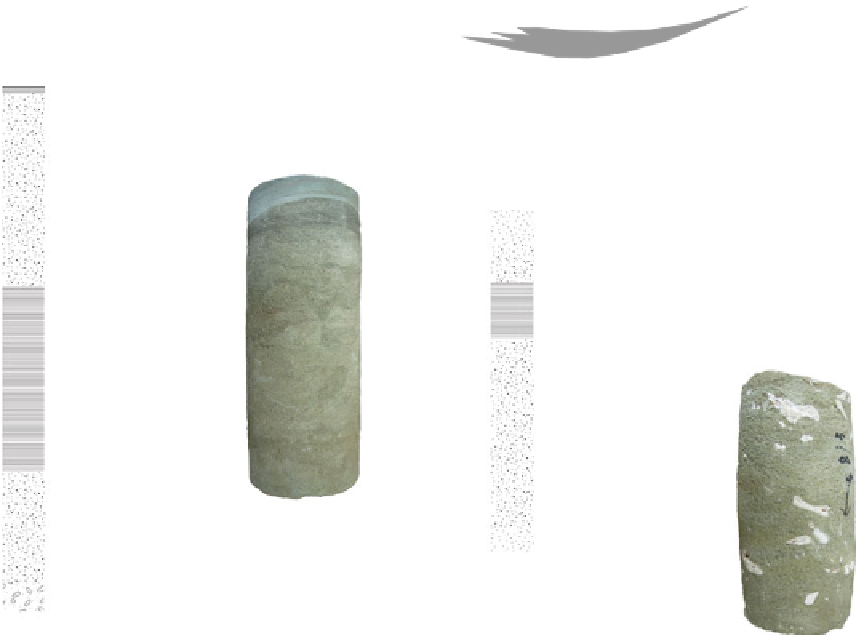Geology Reference
In-Depth Information
Suspended-load
E
F
sub-section
E
x10 or
x100 m
Anoxic
Depth Facies
Grain-size
C
SfSmS
cS
Gr
P
Bioturbated
heterolithics
sub-section
Depth Facies
Grain-size
S
mc-b
C
S
fS
mS
cS
Gr
P
-835 m
F
luvia
l
St
Smc
Flood
deposits
Fb
-740 m
Heterolithics
Fl
-840 m
Smc
-745 m
Smc
Flood
deposits
Sm
Gtc
-845 m
Fig. 8.11
Perennial lake facies succession from the middle part of the
Samba core-section (Unit S4; Fig.
8.8b
). Sub-section E: bioturbated
heterolithic sandstones (Smc-b facies) alternating with green shales (Fl
facies). Sub-section F: heterolithic sandstones with clasts of carbonate
and bed intercalations of black shales (Fb facies) and cross-bedded
sandstones (St facies), indicating a persistent and episodically anoxic
lake (e.g. Talbot and Allen
1996
)
aeolian succession comprises
two main depositional
Formation, as it is best described from the Dekese cores
(
sequences:
•
[Beds] Ca, Cb and Ba of Cahen et al.
1960
).
This formation is largely equivalent to the aeolian red
sandstones of the Lower Kwango Group mapped from
outcrops along the southwestern margin of the CB (see
Fig.
8.4
). Across the correlation profile in the center of the
basin (Fig.
8.14
), it is constrained in age (at Gilson) by
biostratigraphy between the Upper Jurassic (Kimmeridgian)
Stanleyville Group and the middle Cretaceous (Albian) Loia
Group.
In the Samba section, the Units S4 and S3 are the
stratotypes of the Loia and Bokungu Groups, respectively
(Cahen
1983a
), both dated biostratigraphically to the
Albian-Cenomanian (Colin
1994
). These two distinct lacus-
trine successions, first periodically anoxic with several beds
of black shales, and then shallower with more carbonate-rich
and fluvial sediments are separated by a fractured horizon of
'
Couches
'
In the lower part, mixed aeolian and flood deposits (sub-
Unit D4a) record the main maximum transgression
(MFS). This sequence terminates with a thin (1 cm
thick) carbonate layer at depth
622 m that can represent
a desiccation surface and a hiatus (Fig.
8.10
).
• An overlying sequence includes numerous superimposed
aeolian dunes (sub-Unit D4b) and intercalates near the top
with two carbonate breccias (sub-Unit D4c), which could
also attest of prolonged episodes of desiccation and hiatus.
This aeolian succession is also recognized within the Unit
G4 of the Gilson section (Fig.
8.14
), where it corresponds to
163 m thick, well-sorted, and ferruginous coarse sandstones,
and can correlates with distinctive (very coarse), 36 m thick
arkoses forming the Unit M4 of the Mbandaka section. We
propose to name this aeolian succession:
the Dekese


























































































































































































































































































































































































































































































Search WWH ::

Custom Search